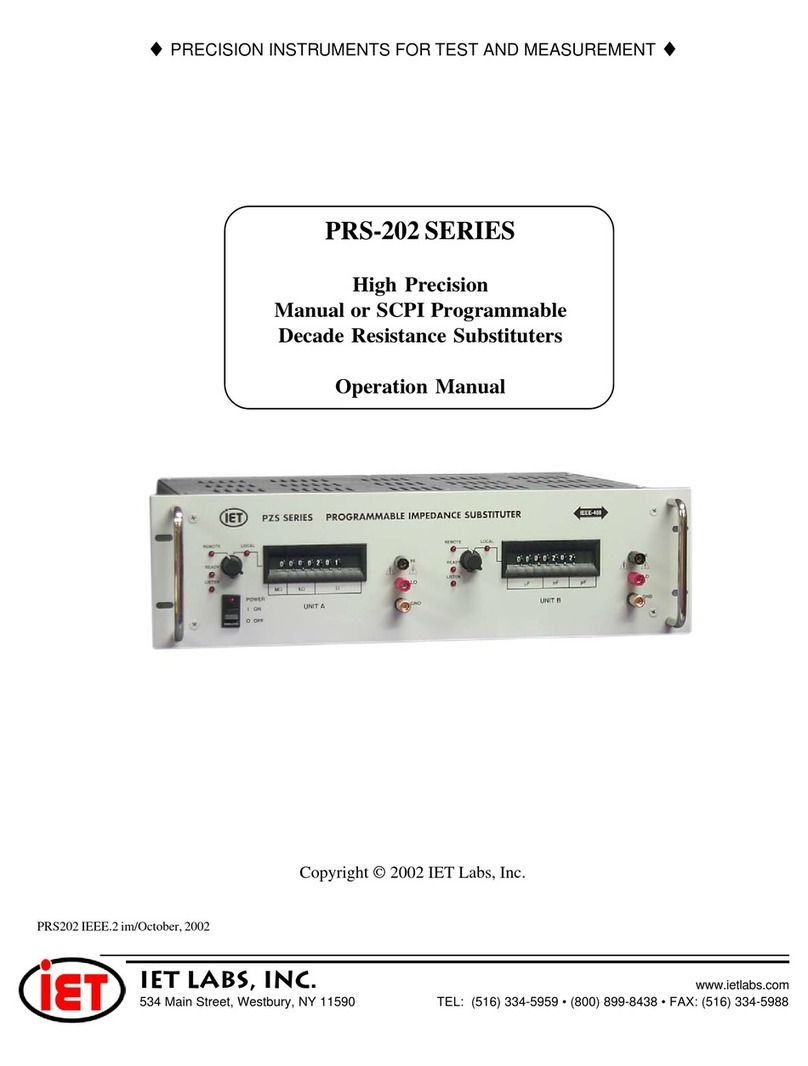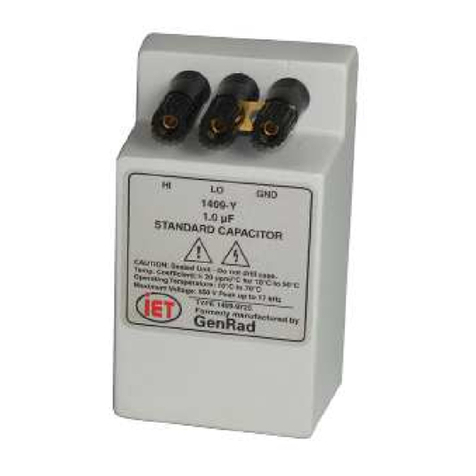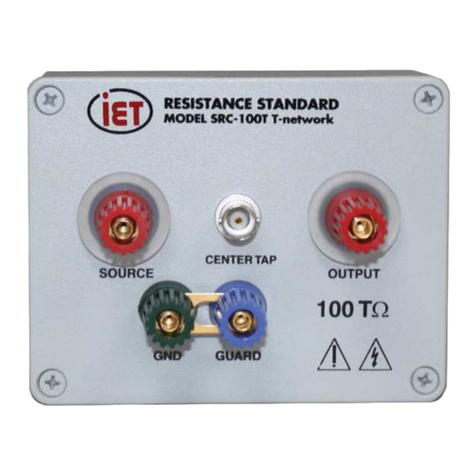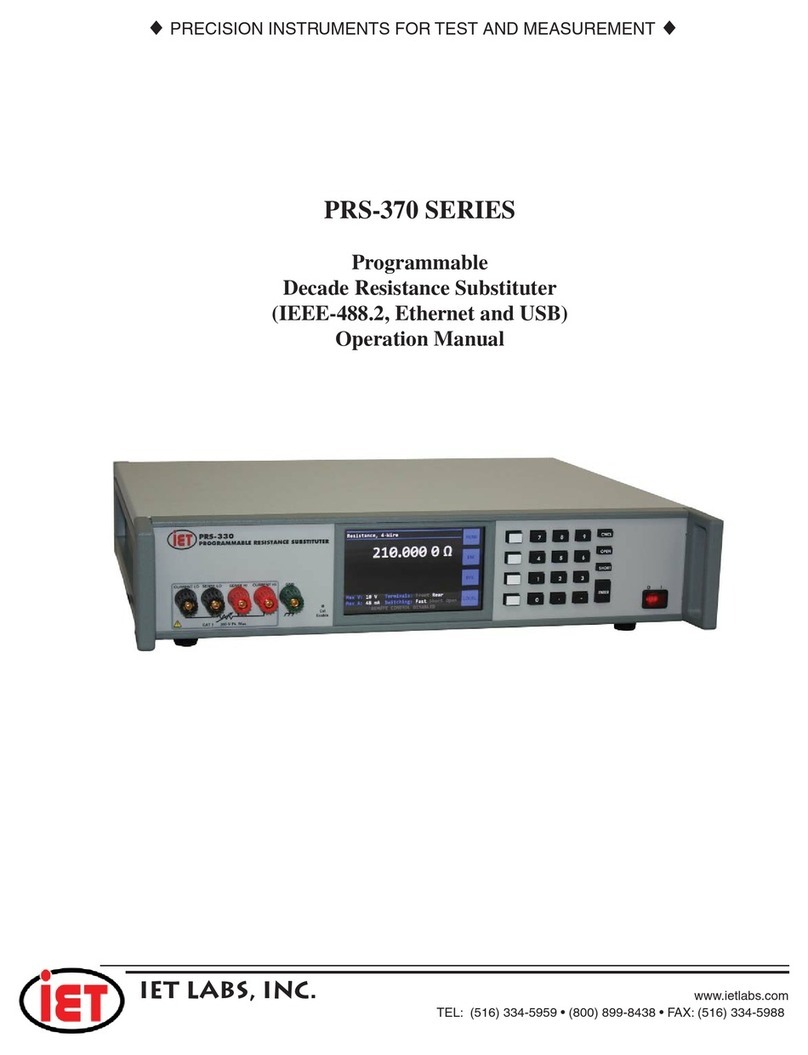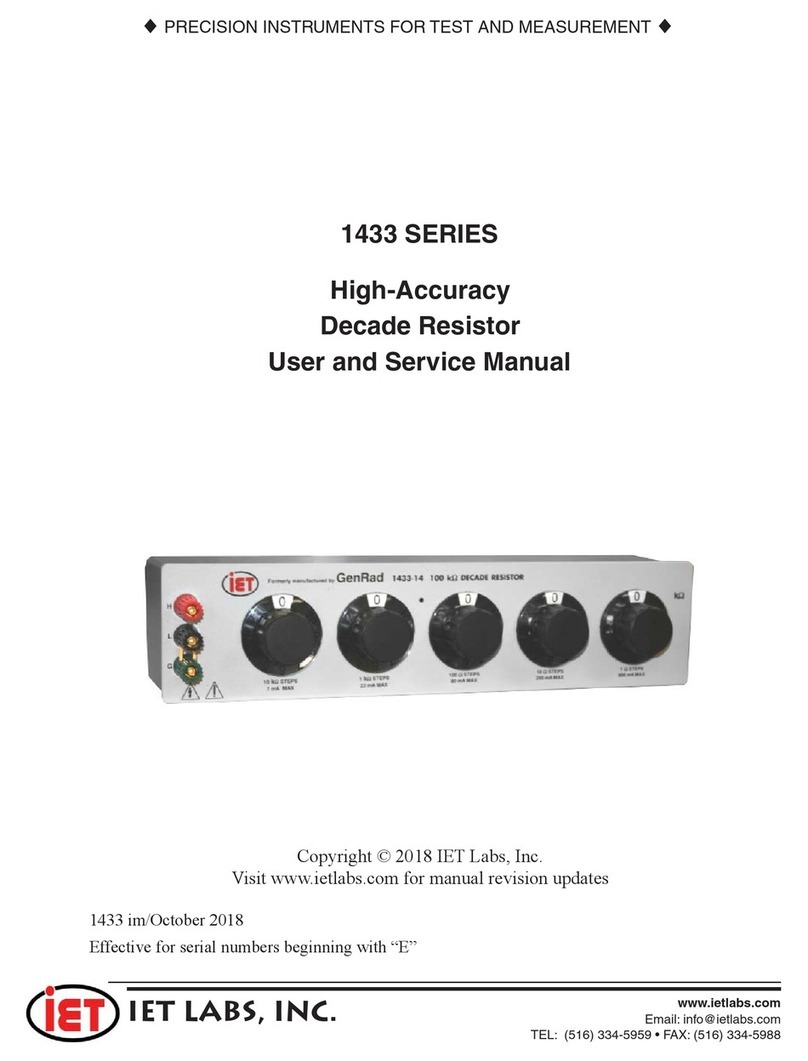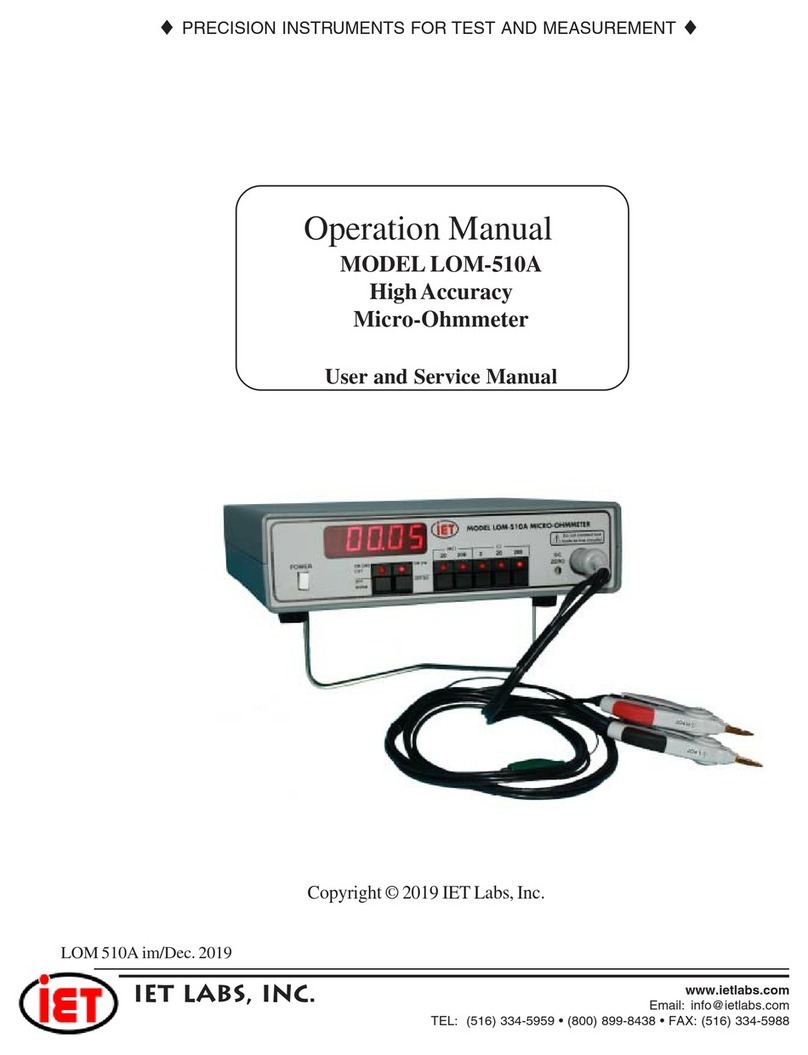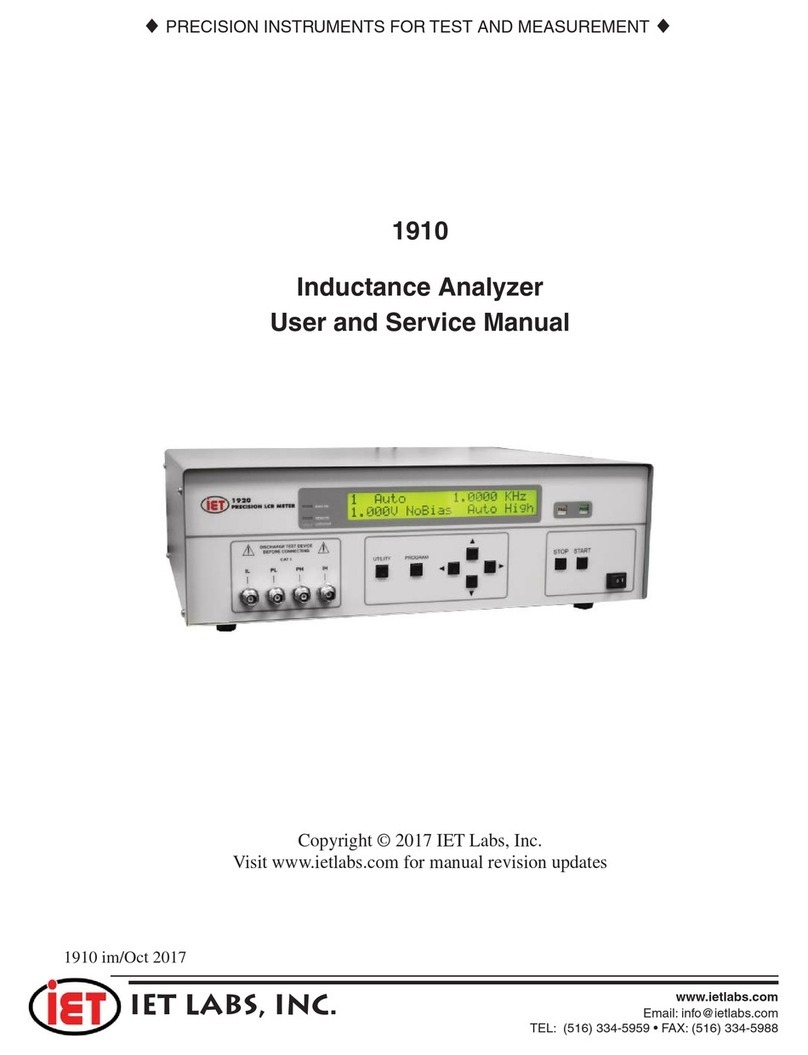
5
HACS-Z-A-6E-1pF
5Operation
3.1 Initial Inspection and Setup
This instrument was carefully inspected before ship-
ment. It should be in proper electrical and mechanical
order upon receipt.
An OPERATING GUIDE, shown in Figure 2-2, is
attached to the case of the instrument to provide ready
reference to specifi cations.
3.2 Switch Setting
The HACS-Z Precision Capacitor has six capacitance
decades. The actual capacitance for each decade is the
product of the switch setting and the CAPACITANCE
PER STEP indicated below each switch on the front
panel.
Note, however, that if any dial is set on 10, a 1 is added
to the next decade. For example, if the dials are set: to
10-9-9-10-1-1, the resultant capacitance is:
1
1
10
9
9
10
Total 1100011 pF
The zero capacitance of the HACS-Z unit is very low,
but all settings are adjusted to accurately provide their
nominal values, and it is not necessary to subtract the
zero capacitance from any particular setting
Chapter 3
OPERATION
3.3 Connection to Terminals
In order to properly use the HACS-Z capacitor, it is
necessary to understand the use and function of each
of the capacitor terminals. Refer to Figure 1-2 and
note that a basic capacitor is a 2-terminal capacitor
shown as CHL. As described above, CHG and CLG, the
capacitances to the case add to the capacitor CHL un-
less the 3rd terminal G is connected to the guard of
the measuring instrument.
The shielding is divided into two diff erent parts: an
inner shield that minimizes the low terminal-to-
guard capacitance, and an outer shield (the case) that
minimizes the detector input capacitance and noise.
When these two shields are connected together, the
HACS-Z becomes an excellent 3-terminal capaci-
tance substituter with low zero capacitance.
Using the unit as a 2-terminal capacitor will cause an
error of about 100 to 150 pF to be added. This error
is not necessarily the same for every setting. This
also makes the unit susceptible to noise. However,
for high capacitance, the unit may be used as a 2-ter-
minal device.
